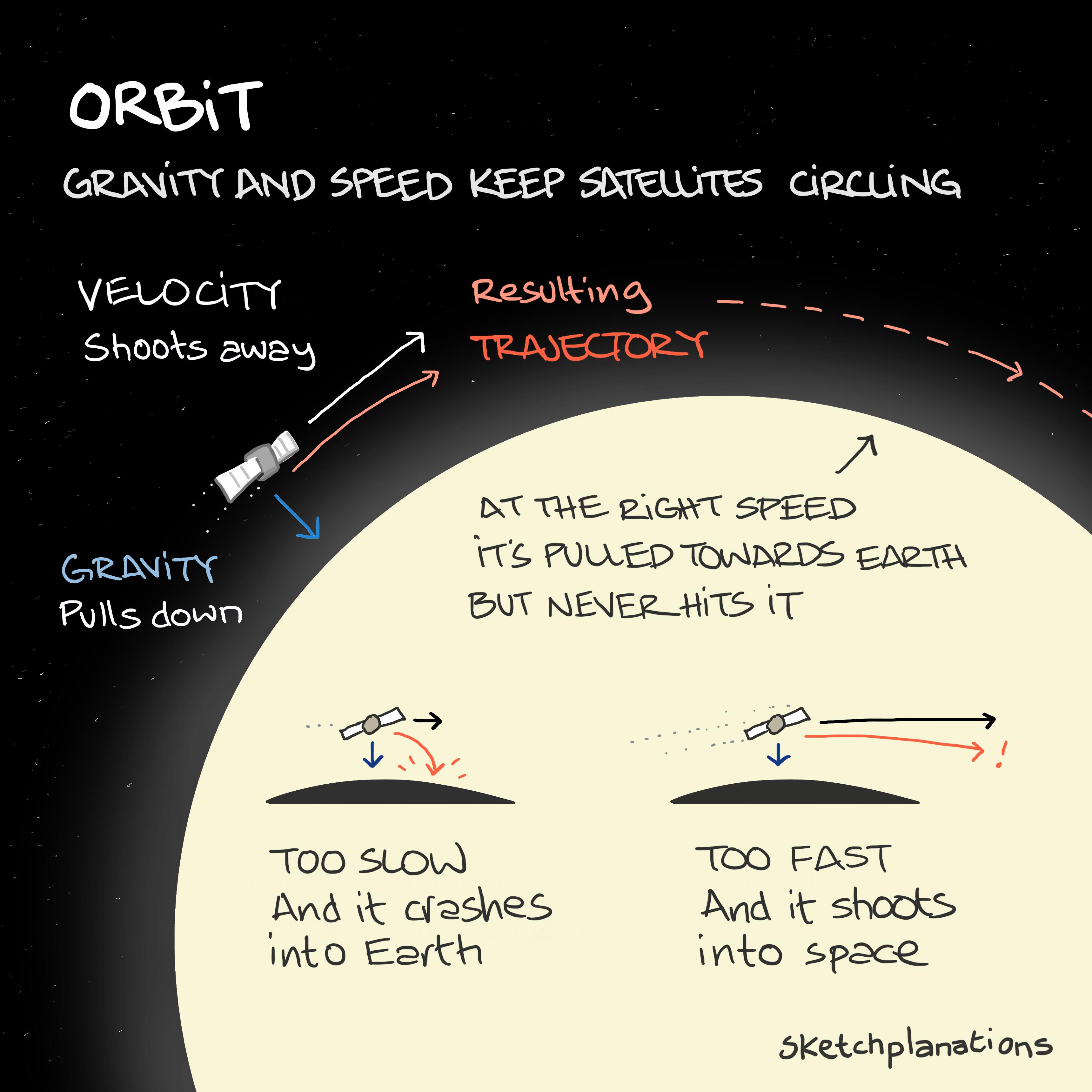Orbit

- Prints
- Copied!
👇 Get new sketches each week
It's mindblowing to me to think at any moment, over 6,000 satellites are whipping around the Earth at terrific speeds and somehow not drifting off into space or crashing into Earth. How does this work?
An orbit around Earth is a delicate balance between the momentum of a satellite traveling at speed parallel to the Earth's surface and the constant tug of gravity towards the Earth.
If the satellite travels too slowly, gravity wins, eventually pulling the satellite back to Earth. If it travels too fast, gravity isn't strong enough to hold it, and the satellite will shoot off into space. But at just the right speed—which depends on its distance from Earth—gravity will pull the satellite towards Earth, but the satellite's speed ensures it will keep missing and instead continue its journey orbiting around Earth. In this case, gravity acts as a centripetal force, a force acting towards the centre, enabling satellites to stay in orbit.
Newton had a thought experiment known as Newton's Cannon where he imagined firing a cannonball off a high mountain at different velocities and what the resultant trajectories would be.
Most orbits are slightly elliptical or oval-shaped. For example, the elliptical nature of the Moon's orbit gives us the joys of things like supermoons.

